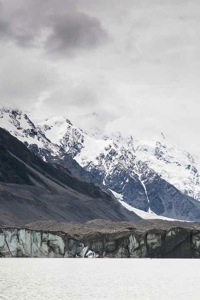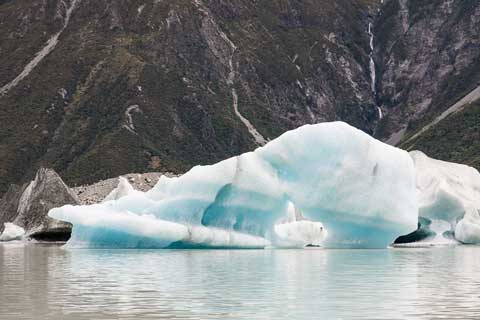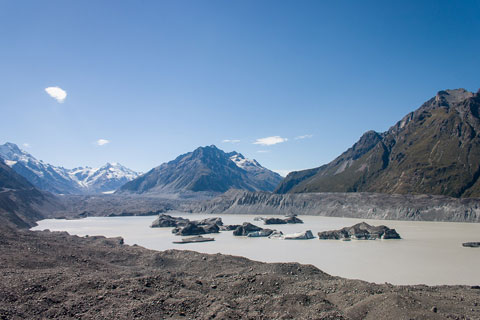 This article by Jim Salinger, University of Auckland; Blair Fitzharris, University of Otago, and Trevor Chinn, National Institute of Water and Atmospheric Research, was first published at The Conversation. The photo at left shows the calving face of the Tasman Glacier in Dec 2013.
This article by Jim Salinger, University of Auckland; Blair Fitzharris, University of Otago, and Trevor Chinn, National Institute of Water and Atmospheric Research, was first published at The Conversation. The photo at left shows the calving face of the Tasman Glacier in Dec 2013.
A third of the permanent snow and ice of New Zealand’s Southern Alps has now disappeared, according to our new research based on National Institute of Water and Atmospheric Research aerial surveys. Since 1977, the Southern Alps’ ice volume has shrunk by 18.4 km3 or 34%, and those ice losses have been accelerating rapidly in the past 15 years.
The story of the Southern Alps’s disappearing ice has been very dramatic – and when lined up with rapid glacier retreats in many parts of the world, raises serious questions about future sea level rise and coastal climate impacts.

The Southern Alps’ total ice volume (solid line) and annual gains or losses (bars) from 1976 to 2014 in km3 of water equivalent, as calculated from the end-of-summer-snowline monitoring programme. Continue reading “New Zealand’s Southern Alps have lost a third of their ice”





 Richard Alley’s book Earth: The Operators’ Manual, which I
Richard Alley’s book Earth: The Operators’ Manual, which I 